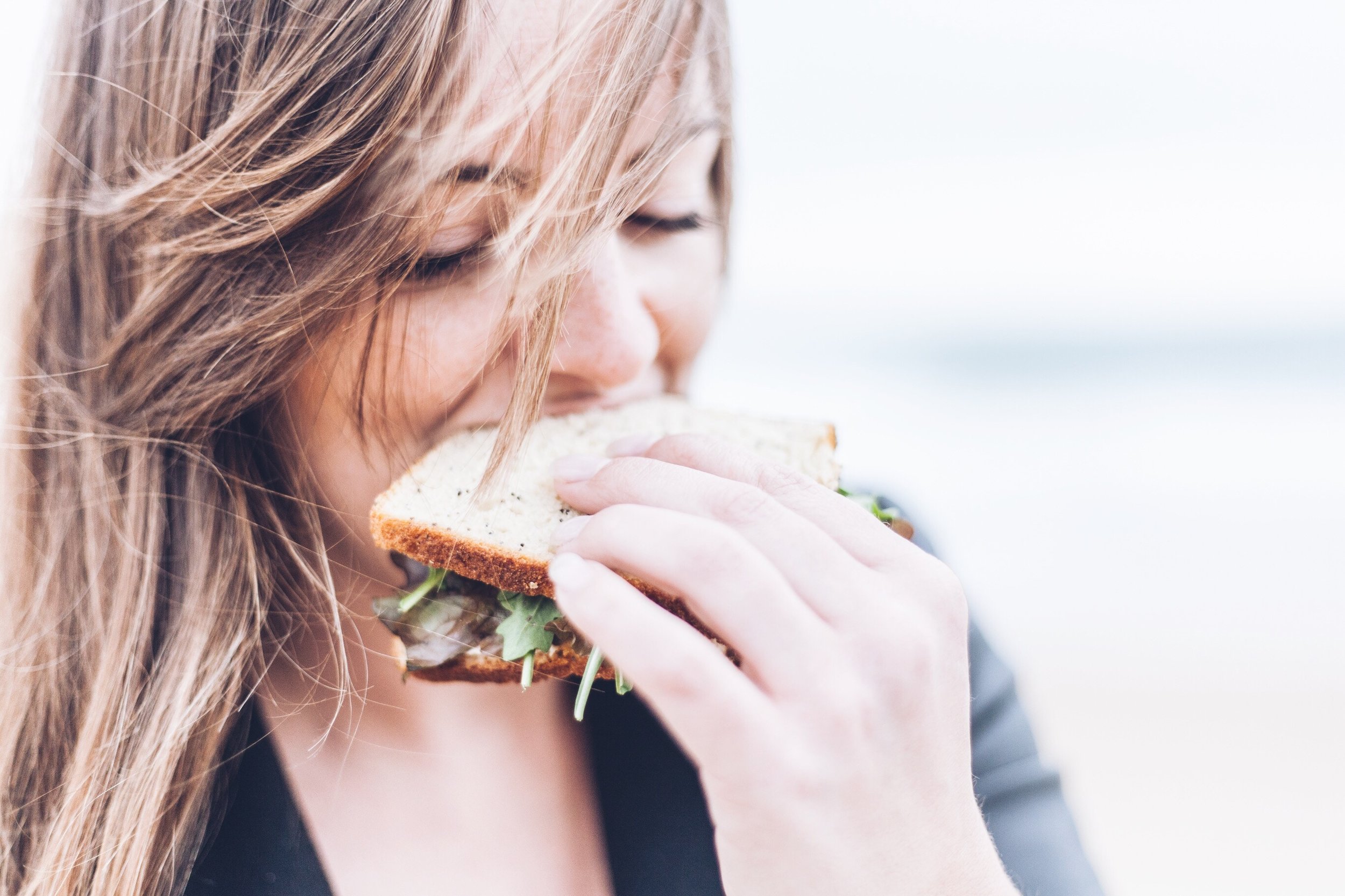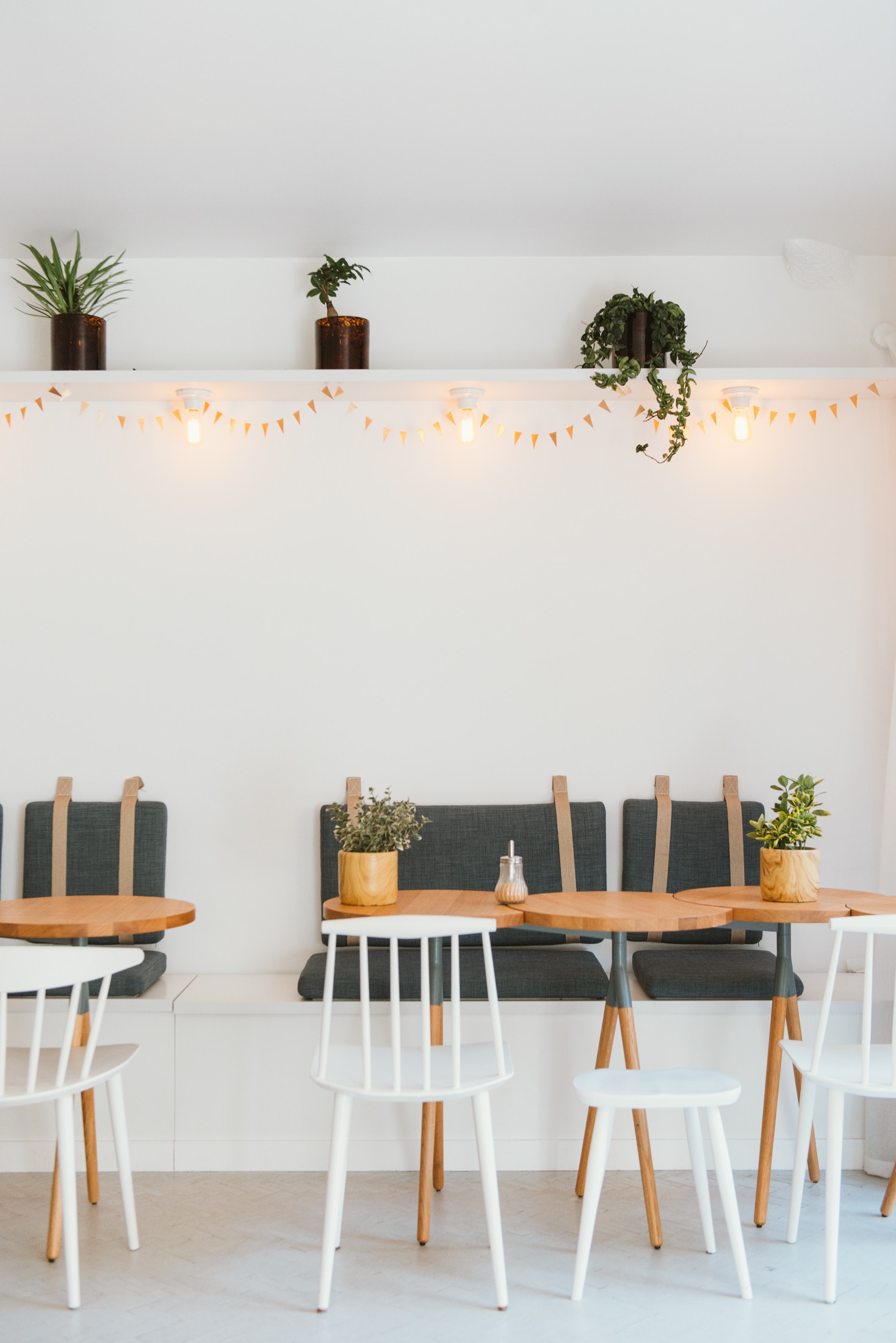Our Values Should Frame Our Health Decisions
We all have a set of core values. We use those values to inform the decisions that we make as we move throughout the world. There is an activity that I do with all my clients when we first meet. We sit down and they will write down as many of their core values that they can think of then they'll spend time contemplating how they're currently living them out, how it will look in the future and what's getting in the way of living out their values right now.
We all have a set of core values. We use those values to inform the decisions that we make as we move throughout the world. An activity to try is to write down as many of your core values as you can think of, then spend time contemplating how you're currently living them out, how that will look in the future and what's getting in the way of living out those values right now.
This gives you a foundation to work from. When we identify what we hold most important in our lives, we know what to focus our time and energy on. So often our core values do not align with the concepts of dieting and pursuing weight loss. If we value time spent with loved ones and serving others, it doesn't make sense to also be engaging in diet culture. The lifestyle needed to manage our weight and food intake can be incredibly isolating. It would be difficult to maintain strong relationships with friends if we're always worried about our food choices. When we're doing something that goes against our values, we usually feel a sense of discomfort. We just have to be willing to be honest with ourselves about it.
Your values might be different than mine, or someone else, but that's okay! It's important that we take the time to think about what our own biggest priorities are. If you're ready to start thinking about how to align your values with your health, try answering some of the questions below:
Questions for reflection:
What are your core values?
Where do you see yourself in 10 years?
How will you think about and treat your body?
What food will you eat?
How will you move your body?
Think about your answers to these questions and decide what steps you can take to start aligning your core values with your health decisions and what might be getting in the way of living out your values. It may be helpful to work with a dietitian to help you dive deeper into these topics. Please reach out if you have any questions!
How to Handle Calorie Labels at Restaurants
Starting this week, the FDA is officially requiring that all restaurants with more than 20 locations post calorie information for their menu items. This means that any chain restaurant, movie theater or bowling alley where you can purchase food will have calorie information listed next to each item on the menu. This initiative was started as a way to combat the "obesity epidemic" in the US. This is problematic because our government is making the assumption that "obesity" (as defined by the very flawed BMI tool) is caused by an over abundance of calories being consumed. However, we know that weight and health are far more complex than this. If it were as simple as 'calories in vs calories out' we wouldn't have an "obesity epidemic."
There is also an assumption that this information will be helpful for all consumers. But the experience of millions of Americans who struggle with eating disorders is being ignored. Seeing calorie information on a menu can be incredibly triggering for someone struggling with any kind of disordered eating. The cycle of dieting can even start with simple calorie observations and may eventually spiral into a diagnosable eating disorder. But since we live in diet/wellness focused culture, these kinds of initiatives tend to be the norm. Intuitive eating and non diet messages are on the rise; but for now, we have to coexist in this world and calorie labels shouldn't stop us from experiencing life!
So below I'm sharing some tools for how to handle seeing these labels at restaurants:
Mentally prepare yourself before going
It may be helpful to mentally prepare yourself to see calorie counts on the menu before going. Take a few minutes to sit with that information and ask yourself how it might impact you. If you like mantras, try repeating some that are helpful for you. A few examples are: "My body knows what to do with all foods. Trust it." or "Calories are only a measure of energy in food, not a measure of my worth."
Be aware of your triggers
Recovering from an eating disorder can be very vulnerable and anxiety provoking. If numbers or calorie counts are something that your eating disorder used to restrict food in the past it's important to be aware of that. You may not be at the point where you can observe calorie information on a menu without being affected. If this is the case, it's okay. But consider avoiding restaurants with calorie information.
Choose local restaurants
Most local restaurants will not fall under these rules because they likely have fewer than 2o locations. You won't have to worry about seeing the calorie information at these businesses. Obviously, it's not always possible to choose local or non-chain restaurants when traveling or within certain areas. If this is the case, go back to my first tip and try to mentally prepare yourself before going in.
Remind yourself of the difference between internal cues vs external cues
Calorie labels for meals would be considered external cues directing you on how much is "appropriate" to eat. If you're working towards becoming an intuitive eater, you know that you want to listen to your own internal cues for hunger, fullness and satiety instead. It's okay to choose a meal with a seemingly large number of calories. Listening to your body's cues for what to eat based on how hungry you are is more important than the number associated with the meal. You can trust that your body will tell you when you've had enough and even if you over-shoot your body's fullness, it's okay! Eating is not meant to be a formula for perfection.
Know that you don't have to internalize the information
Remind yourself that you have the power and ability to observe calorie information without letting it sink in. You are not simply a sponge that absorbs all the information that you see. You can choose what stays and what doesn't. Calorie labels don't have to impact your eating choices.
Discuss the experience with your dietitian and therapist
If you're working with a dietitian and/or therapist, consider discussing the how the experience may affect you. An RD or therapist can help you work through the anxiety and come up with an individualized plan for how to handle the experience in the future.
Intuitive Meal Planning
One question that I get a lot from clients is whether or not it's okay to meal plan if you're trying to eat intuitively. The short answer would be, yes it's okay to meal plan! But we want to be doing so in a flexible way, that allows for change and variety. I think that for most people there's a big fear that if we introduce any form of structure into our eating, we'll automatically fall back into restriction or diet-y behaviors. If you're coming from a background of these behaviors, it's a valid concern. It's important to be working through restrictive mindsets and the desire for control so that we can come to a place of neutrality with food decisions. If you're someone who has used meal planning as a way to restrict in the past, you may want to double check your intentions before getting started again.
However, if you're in a good place in your relationship with food, meal planning can be a super helpful tool! It can encourage wise spending of your money and help you get organized as prepare for your week. I know many people have families and small children to feed, daily commitments to consider and tight budgets. Loosely planning out some meals for the week can help us keep all of those priorities in mind without becoming too rigid.
I'm sharing some tips below that have worked for me in the past. You may find that some of them work for you and others don't. That's totally okay! You can always try some out, see how they feel and keep what works best for you. Give yourself grace and room to figure out what the best options are for your own needs.
General Tips:
Consider only planning 4 dinner meals per week. AKA you go to the grocery store with a plan to buy ingredients for 4 (ish) planned dinner meals that you want to incorporate throughout your week. This leaves room for other meals and nights out with friends. You have the opportunity to try something new with these dinner meals or stick with old favorites! (You don't always have to have something new and "Pinterest worthy"-your favorite lasagna or mac and cheese recipe is just fine!).
Plan to make extras for leftovers. Consider doubling or tripling the recipe you're working with so you can have some extra to use for lunches or dinner the next day. This can make lunches and dinner decisions much simpler.
Try rotating breakfast and lunches. Try to incorporate variety into your meals by working on rotating options for breakfast and lunch. You could try oatmeal for breakfast, other days cereal or eggs and toast. Then do the same with lunches. Some days I'll have leftovers, other days I'll bring some kind of sandwich or salad with lots of sides.
Allow the days and meal choices to change. Sometimes things come up during the week. Building in flexibility is key. Some days you may not feel like cooking. Some weeknights it might sound more enjoyable to spend your time outdoors than making a whole meal. When that happens, just adjust and save one of your other planned dinner meals for another night.
Make a grocery list, but leave room for changes and fun foods. Making a list is helpful so you don't forget what you need (and can avoid making 100 trips to the store each week). Typically, I try to figure out what I definitely need and leave room for changes once I get to the store. I like to make sure I'm also planning some fun foods like ice cream or cookie dough or other desserts.
Compile some lists of favorite and go-to meals. Compile the meals and recipes that you really enjoy all in one place. If you make something that turns out really well, put it into a file on your computer or pin it to a Pinterest board so you can come back to it. Keeping your favorites handy can help you avoid falling into a black hole searching for recipes and over-thinking your options.
Have some staples and convenience foods on hand at home. Continually restock your pantry and freezer with items you can use to quickly whip something together when you don't feel like cooking, or it feels too overwhelming. Keep frozen pizzas, veggie mixes, frozen burritos, waffles, potatoes, bread, etc. on hand for easy meals or snacks.
Printable Planner:
I'm also sharing a downloadable meal planning guide. It's intentionally very simple so that you can make it your own! It's meant to be an outline, so don't feel like you need to fill in each and every day, just use what you need and what's most helpful for you.
Download
How to Start Intuitive Eating-Part 3
This is the final post in the series on 'getting started with intuitive eating'! If you're just joining us, check out the first two posts to catch up: How to Start Intuitive Eating-Part 1
How to Start Intuitive Eating-Part 2
Today we're wrapping up our discussion on how to start intuitive eating. While we haven't covered all of the principles, hopefully this series has helped you start to think differently about your relationship with food, and to begin taking steps toward becoming an intuitive eater!
Part Three
Honor Your Feelings Without Using Food
We all deal with negative emotions from time to time, it's part of being a human. We begin to learn coping skills for those feelings from a young age. Certain ways of coping may be more constructive than others. Turning to food for comfort, or to temporarily numb our feelings, can definitely serve a purpose in that moment. However, it's not going to resolve the underlying issue, so it's not the most helpful coping strategy.
The first step to finding a more helpful way to cope can be to bring awareness to the negative feelings. Sometimes we don't even realize we're turning to food out of a desire for comfort or distraction. If we can learn to identify the negative feelings, we're one step closer to dealing with them in a more constructive way. Once we can figure out how we're feeling, we can give ourselves a chance to pause and ask what we really need in the moment. Sometimes, we turn to food to help us deal with loneliness or anxiety, but that doesn't ultimately help us resolve those feelings. Taking a pause lets us decide whether choosing food will be helpful in the moment or not. This is not to say that we can never do any kind of emotional eating ever again.
Part of food's purpose is to be an experience that we enjoy and makes us feel good. But we don't want food to be our only way of coping with certain feelings. As you start working through this principle, you may find that there is more going on that feels too big to handle alone. I would recommend reaching out to a therapist to help you work through some of those feelings.
Ultimately we want food to be neutral, but still enjoyable. As intuitive eaters, we want to be in the driver's seat- not the food. Bringing some further awareness to what's going on under the surface, with our emotional and mental state, can help us move forward in the process.
Respect Your Body
The final principle that we're reviewing in this series is about respecting your body. This is one that you'll likely continue to work on throughout your journey to intuitive eating. I wanted to include it in the "getting started" series because I think it's important to start thinking about our bodies in a different way. Body image work can be a long process. But the first steps are simply letting yourself accept and respect your body. It may be helpful to also dive into some of the research and ideas behind Health at Every Size.
It's important to accept our bodies as they were created. We are not all meant to look alike-this includes the size of our bodies. When we accept our "genetic blue print" we are better able to let go of the diet mentality. If we're no longer chasing the thin ideal then we won't have a need for diets. We're free to become intuitive eaters and let our bodies settle in the weight that it's most comfortable and healthy.
A simple first step could be to list all the things you're grateful about for your body. Is it that you were able to carry and grow a baby, that you can walk to the store nearby or simply that your body allows you to move through the world, and gives you the ability to enjoy your favorite things. Whatever it may be, list them out and remind yourself regularly of what you're grateful for.
That's it for this series! I hope you found it beneficial and if you're interested in really digging in and starting this work for yourself, I'd love to partner with you! I'm accepting new clients for intuitive eating work so please reach out if this is something you're interested in!



















